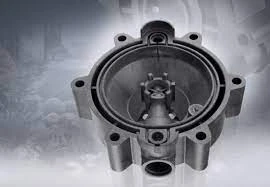In recent years, sustainability and environmental responsibility have become increasingly important in manufacturing. Thermoplastic Foam Molding is an advanced technique that can significantly reduce the environmental impact of production processes.
This method injects a blowing agent into the thermoplastic material, which expands to create a lightweight, high-strength foam. Continue reading this blog to explore the environmental benefits of thermoplastic foam molding.
Reduced Material Waste
Thermoplastic foam molding can significantly reduce material waste in many ways compared to conventional molding techniques.
Precise control: Manufacturers can regulate the amount of expansion during the molding process by infusing a blowing agent into the thermoplastic material. Thus, it offers more precision and reduces the need for extra material.
Lower scrap rates: Traditional molding techniques often have high scrap rates because of flaws and irregularities. But thermoplastic foam molding may cut waste and conserve resources by producing high-quality products with minimal scrap.
Recycling: Thermoplastic foam molding materials are often recyclable, allowing any extra or scrap material to be put to new use. It promotes a circular economy and further reduces waste.
Automotive, aerospace, and packaging are examples of industries where thermoplastic foam molding can be used.
Energy Efficiency
Thermoplastic foam manufacturing can conserve energy in many ways compared to conventional molding techniques.
Lower processing temperatures: Thermoplastic foam molding materials can be processed at lower temperatures than traditional molding materials, which can save money and energy.
Shorter cycle times: Cycle times can be completed more quickly using foam molding than standard molding techniques, which eventually lowers the energy demand.
Reduced tool wear: Lower processing temperatures used in foam molding also reduce tool and equipment wear and tear, increasing their lifespan and lowering the need for replacements.
Construction, furniture, and consumer products are examples of industries where thermoplastic foam molding can be used.
Recyclability
Materials for molding thermoplastic foam are often recyclable, making them an eco-friendly option for businesses.
Material reuse: Recyclable materials reduce the demand for fresh raw materials and waste by allowing the use of leftover or scrap material from the foam molding process.
Closed-loop systems: These technologies let some manufacturers recycle and reuse materials right inside their manufacturing facilities. As a result, it promotes a circular economy and further decreases waste.
End-of-life options: Many foam-molded products can be recycled at the end of their useful lives, which cuts down the overall waste and ends up in landfills.
Medical devices, electronics, and sporting equipment are examples of industries where thermoplastic foam molding can be used.
Final Thoughts
So basically, Thermoplastic Foam Molding is an eco-friendly technique that offers several environmental benefits.
This technique helps companies to produce high-quality products while significantly reducing their environmental effect.
As sustainability becomes more important to consumers and businesses alike, thermoplastic foam molding will only continue to grow due to its environmental benefits.
Get started with the experts of iMold USA, LLC for your next Thermoplastic Foam Molding project.



